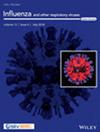The Role of Viral Interference in Shaping RSV Epidemics Following the 2009 H1N1 Influenza Pandemic
Abstract
Background
Disruptions in respiratory syncytial virus (RSV) activity were observed in different countries following the 2009 influenza pandemic. Given the limited use of non-pharmaceutical interventions, these disruptions provide an opportunity to probe viral interference due to the out-of-season epidemics. The objectives of the study are twofold: to characterize atypical RSV activity in the United States (US) and to explore the mechanisms underlying changes in RSV epidemics following the pandemic.
Methods
Laboratory-confirmed RSV cases across 10 US regions from June 2007 to July 2019 were analyzed. A dynamic time warping method was used to characterize RSV activity in different seasons. A two-pathogen model was constructed to explore viral interference mechanisms. A sampling–importance–resampling method was applied to estimate the effects of viral interference.
Results
We found that RSV activity was reduced following the influenza pandemic in the 2009/10 season across all regions in the US. By contrast, we found an enhanced but delayed RSV epidemic across the US in the 2010/11 season. Using a mathematical model, we explored three potential viral interference mechanisms that could explain the change of RSV activity following the pandemic. The pandemic influenza may interfere with RSV to reduce susceptibility to RSV coinfection, or shorten the RSV infectious period, or decrease RSV infectivity in co-infections.
Conclusions
This study provides statistical evidence for atypical RSV seasons following the influenza pandemic in the US and sheds light on viral interference mechanisms affecting RSV epidemics, offering a model-fitting framework for analyzing surveillance data at the population level.


 求助内容:
求助内容: 应助结果提醒方式:
应助结果提醒方式:


